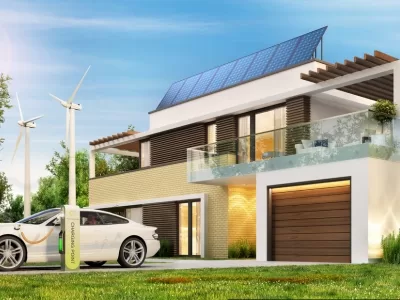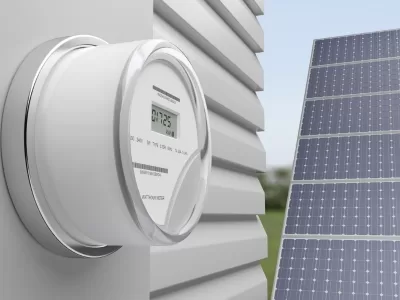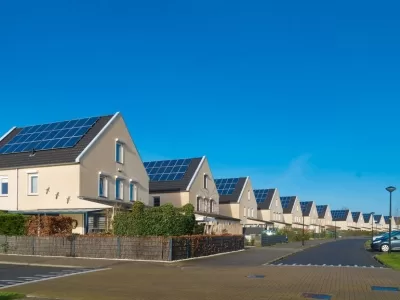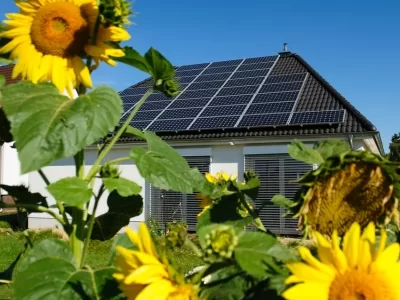Solar panels have experienced a surge in popularity as more people recognize their potential for providing clean, renewable energy. Understanding the costs associated with solar panels is crucial for homeowners considering making the switch. This guide will delve into solar panel costs, savings, installation, financing options, and other important factors that can help you make an informed decision.
Solar Panel Costs for Homes and Averages
The average cost of solar panels for residential use varies depending on several factors, such as system size, installation costs, and location. Generally, the cost of ranges from $15,000 to $25,000, with an average cost of around $20,000 for a standard 5kW system. Keep in mind that these costs are before applying any federal, state, or local incentives or rebates.
Several factors can influence the cost for homes, including:
- Solar panel efficiency: Higher-efficiency panels usually come with a higher price tag but generate more power in less space.
- System size: Larger solar panel systems require more materials and labor, increasing the overall cost.
- Location: The cost of panels and installation can vary by region due to differences in labor costs, permitting fees, and incentives.

Solar Panel Costs by State and Type
Solar panel costs can vary significantly by state. Differences in labor costs, permitting fees, and available incentives cause these variations. For example, solar panel costs in California might be higher than in other states due to higher labor costs, but the state’s generous incentives can offset some of the additional expenses.
There are three main types of solar panels: monocrystalline, polycrystalline, and thin-film. Monocrystalline panels are the most efficient and expensive, while polycrystalline panels are slightly less efficient and more affordable. Thin-film panels are the least efficient and least expensive option. The type of panel you choose will depend on your budget, space constraints, and energy needs.
Comparison of Average Solar Panel Costs by State
To provide a better understanding of how solar panel costs vary by state, here is a comparison of average costs for a 5kW system in several states:
- California: $15,000 – $18,000
- Texas: $14,000 – $17,000
- Florida: $13,000 – $16,000
- New York: $16,000 – $19,000
- Arizona: $13,000 – $16,000
Remember that these costs are before applying any incentives or rebates.
Different Types of Solar Panels and Cost Differences
Monocrystalline, polycrystalline, and thin-film solar panels differ in terms of cost and efficiency:
- Monocrystalline panels: These panels offer the highest efficiency (around 20-22%) but come at a higher cost. The average price per watt ranges from $0.80 to $1.20.
- Polycrystalline panels: With slightly lower efficiency (around 15-17%), these panels are more affordable. The average price per watt ranges from $0.60 to $0.80.
- Thin-film panels: These panels have the lowest efficiency (around 10-12%) and the lowest cost. The average price per watt ranges from $0.50 to $0.70.
Solar Panel Installation Costs and Factors
Solar panel installation costs typically account for 10-20% of the overall system cost. Installation costs can be influenced by factors such as roof type and condition, system size, and the complexity of the installation. On average, installation costs range from $2,000 to $5,000 for a standard 5kW system. However, it’s essential to get quotes from multiple installers to find the best price for your specific situation.
Some factors that can influence solar panel installation costs include:
- Roof type and condition: Certain roof types, such as clay tile or metal, may require specialized mounting hardware or additional labor, increasing installation costs. Additionally, a roof in poor condition may need repairs or reinforcement before solar panel installation can occur, adding to the overall cost.
- System complexity: Complex installations, such as those involving multiple roof planes or unusual angles, can increase labor costs.
- Accessibility: If the installation site is difficult to access or requires special equipment, it may result in higher installation costs.

Solar Panel Savings and Financial Considerations
They can save homeowners money on their electricity bills by generating clean, renewable energy. The amount of savings depends on factors such as the size of the solar panel system, the amount of sunlight received, and local electricity rates. On average, homeowners can save between $10,000 and $30,000 over the 25-30 year lifespan of a solar panel system.
Comparison of Solar Panel Savings by Region and System Size
Solar panel savings can vary by region due to differences in sunlight availability and electricity rates. Here is a comparison of estimated annual savings for a 5kW system in several regions:
- California: $1,200 – $1,800
- Texas: $800 – $1,200
- Florida: $1,000 – $1,500
- New York: $1,200 – $1,700
- Arizona: $1,000 – $1,500
Financing Options for Solar Panels
There are several financing options available for homeowners looking to purchase solar panels:
- Solar loans: These are loans specifically designed for financing solar panel systems. Solar loans often have favorable terms and low-interest rates compared to other types of loans.
- Leases: With a solar lease, homeowners can rent a solar panel system from a solar provider, paying a fixed monthly fee in exchange for using the generated energy. At the end of the lease, homeowners may have the option to purchase the system or have it removed.
- Power purchase agreements (PPAs): Similar to a lease, a PPA involves a solar provider installing a solar panel system on a homeowner’s property. However, instead of paying a fixed monthly fee, homeowners pay for the electricity generated by the system at a predetermined rate.
Are Solar Panels Worth It? Evaluating Costs and Benefits
Determining whether they are worth the investment involves considering both financial and non-financial factors:
- Financial benefits: They can provide long-term savings on electricity bills and potentially increase property values. Depending on factors such as system size and location, the payback period for solar panels can range from 5 to 10 years.
- Non-financial benefits: Solar panels contribute to a cleaner environment by reducing greenhouse gas emissions and reliance on fossil fuels. This can be an important consideration for homeowners who prioritize environmental sustainability.
- Hidden costs and potential drawbacks: It’s essential to consider potential hidden costs, such as maintenance, insurance, and the need to replace system components like inverters. Additionally, some homeowners may face challenges such as limited roof space or unsuitable roof orientation.
By carefully evaluating these factors, you can determine if solar panels are a worthwhile investment for your home.
Solar Panel Cost Factors and Installation Cost Breakdown
Understanding the factors that affect solar panel costs can help homeowners make informed decisions when considering solar panel installation. Some factors that influence solar panel costs include:
- System size: Larger systems with more solar panels will generally be more expensive due to increased material and labor costs.
- Panel type: Monocrystalline panels are typically more expensive than polycrystalline or thin-film panels, but they also offer higher efficiency.
- Inverter type: String inverters are generally less expensive than microinverters or power optimizers, which offer better performance and monitoring capabilities but come at a higher cost.
- Labor and installation costs: Installation costs can vary depending on factors such as roof type, system complexity, and accessibility.
Detailed Cost Breakdown of a Typical Solar Panel Installation
Here’s an example of a cost breakdown for a 5kW solar panel system:
- Solar panels: $3,000 – $5,000
- Inverter: $1,000 – $2,000
- Mounting hardware and wiring: $500 – $1,000
- Labor and installation costs: $2,000 – $5,000
- Permits and inspections: $500 – $1,000
Total cost: $7,000 – $14,000
Keep in mind that these figures are only estimates and can vary depending on your specific situation.
Tips on Finding the Best Installation Deal
To find the best deal on solar panel installation, follow these tips:
- Get multiple quotes: Request quotes from at least three different solar installers to compare prices and services.
- Research incentives: Look for federal, state, and local incentives that can help offset the cost of solar panel installation.
- Negotiate: Don’t be afraid to negotiate with solar installers to get a better price or additional services.
- Read reviews: Check online reviews and testimonials to learn about the experiences of other homeowners with the solar installers you’re considering.

How to Save Money on Solar Panels and Maximize Efficiency
Here are some strategies for saving money on solar panels and maximizing their efficiency:
- Take advantage of incentives: Federal, state, and local incentives can significantly reduce the cost of solar panel installation. The federal solar tax credit, for example, allows homeowners to deduct a percentage of their solar panel installation costs from their federal income taxes.
- Opt for a cost-effective panel type: While monocrystalline panels offer higher efficiency, polycrystalline or thin-film panels can be a more cost-effective choice for homeowners on a tight budget.
- Proper maintenance: Regular cleaning and maintenance can help keep your solar panels operating at peak efficiency, ensuring maximum energy production and savings.
- Optimal panel orientation and tilt: Ensure your solar panels are installed at the optimal orientation and tilt angle to maximize sunlight exposure and energy production.
Solar Panel Installation Process and Choosing the Right Installer
Understanding the solar panel installation process and choosing a qualified installer can help ensure a smooth and successful project.
Overview of the Solar Panel Installation Process
- Site assessment: The installer will visit your property to evaluate factors such as roof type, orientation, shading, and available space.
- System design: Based on the site assessment, the installer will design a solar panel system tailored to your needs and preferences.
- Permitting and paperwork: The installer will handle necessary permits and paperwork, including applying for incentives and utility interconnection agreements.
- Installation: The solar panel system will be installed on your property, typically taking 1-3 days for a residential system.
- Inspection and commissioning: Once the installation is complete, the system will be inspected by a local authority to ensure it meets all necessary safety and electrical standards. After the inspection, the installer will commission the system, connecting it to the grid and activating monitoring services if applicable.
How to Choose a Qualified Solar Panel Installer
Selecting the right solar panel installer is crucial to ensure a successful and hassle-free installation. Here are some tips to help you choose a qualified installer:
- Look for experience and certifications: Choose an installer with a track record of successful installations and relevant certifications, such as NABCEP (North American Board of Certified Energy Practitioners) certification.
- Check for licenses and insurance: Ensure the installer holds the appropriate licenses and insurance coverage required in your area.
- Read reviews and testimonials: Look for online reviews and testimonials from previous customers to get an idea of the installer’s reputation and the quality of their work.
- Ask for references: Request references from the installer and contact them to inquire about their experiences with the company.
- Compare quotes and services: Obtain quotes from multiple installers and compare their prices, services, and warranties.
Examination of the Potential Cost Savings of DIY Solar Panel Installation
While a DIY solar panel installation may seem like a cost-effective option, there are several factors to consider before deciding to go this route:
- Complexity: Solar panel installation can be a complex process, requiring specialized knowledge and skills.
- Safety risks: Installing involves working with high-voltage electricity and climbing on roofs, which can be dangerous for inexperienced individuals.
- Permitting and inspections: Handling permits and inspections can be challenging without the expertise and resources of a professional installer.
- Warranty concerns: Some manufacturers may void warranties if the solar panel system is not installed by a certified professional.
Overall, while DIY solar panel installation may offer potential cost savings, the risks and challenges may outweigh the benefits for most homeowners.

Solar Battery Costs and Other Solar Panel Add-Ons
In addition to the basic components of a solar panel system, there are several add-ons that can enhance the functionality and performance of your system.
Cost of Solar Batteries and Their Benefits
Solar batteries can store excess energy generated by your solar panels, allowing you to use solar power even when the sun isn’t shining. The cost of solar batteries varies depending on the size and capacity, ranging from $5,000 to $15,000 or more. Despite the upfront cost, solar batteries can provide significant long-term savings by reducing your reliance on grid electricity and offering backup power during outages.
Discussion of Other Common Solar Panel Add-Ons and Their Costs
- Monitoring systems: Solar monitoring systems allow you to track your system’s performance and energy production. These systems can cost anywhere from $250 to $1,000 or more, depending on the features and complexity.
- Solar water heaters: Solar water heaters use solar energy to heat water for your home, reducing your reliance on traditional water heaters. The cost of solar water heaters typically ranges from $2,000 to $5,000.
- Solar pool heaters: Solar pool heaters use solar energy to heat your swimming pool, potentially saving on pool heating costs. The price of solar pool heaters varies depending on the size and type, with costs ranging from $1,500 to $4,000.
Conclusion
Solar panels are a major investment with long-term financial and environmental benefits. Knowing costs, savings, and installation helps homeowners decide if panels suit their homes. With a proper installer and system, solar energy can be a practical, cost-effective option for many households.
In conclusion, solar panel costs vary depending on factors like system size, panel type, location, and installation. Homeowners should weigh benefits and drawbacks carefully before deciding. Researching incentives, comparing installer quotes, and maximizing efficiency can save money and provide long-term benefits.
Demand for clean, renewable energy grows, and solar panels provide an appealing solution for homeowners wanting to reduce their carbon footprint and save on energy costs. Understanding factors influencing solar panel costs, potential savings, and financial aspects helps homeowners make informed decisions about investing in solar energy. This contributes to a sustainable future and offers numerous benefits from solar panels.
FAQs
How much do solar panels cost?
The cost of solar panels varies depending on the size of the system, the type of panels, and your location. On average, panels can cost between $2.50 and $3.50 per watt, meaning a 5kW system could range from $12,500 to $17,500 before incentives and rebates.
How much does it cost to install solar panels?
Installation costs typically make up 10-20% of the total cost of a solar panel system. This includes labor, permitting, and other fees. For a 5kW system, installation costs may range from $1,500 to $3,000.
How much do solar panels save?
Savings from panels depend on factors such as your electricity usage, local electricity rates, and the size of your solar system. On average, homeowners can save $10,000 to $30,000 over the lifetime of their solar panel system.
How can I pay for solar panels?
There are several ways to pay for panels, including cash, loans, leases, and power purchase agreements (PPAs). Each option has its pros and cons, so it’s essential to determine which one works best for your financial situation.
What factors impact solar costs?
Factors impacting solar costs include system size, panel type, installation complexity, location, and available incentives and rebates.
How do I pay for solar panels?
You can pay for panels through cash, loans, leases, or PPAs. Research and compare the different financing options to determine the best fit for your budget and needs.
How to save money going solar?
To save money on solar, take advantage of federal, state, and local incentives, choose the right financing option, and compare quotes from multiple solar installation companies.
Are solar panels worth it?
Panels are generally worth the investment, as they can save homeowners money on electricity bills, increase property value, and reduce the environmental impact. However, the specific return on investment depends on factors like location, electricity rates, and the size of the solar system.
What are the hidden costs and disadvantages of solar?
Hidden costs may include system maintenance, potential roof repairs, and upgrades to your home’s electrical system. Disadvantages include the upfront cost, limitations on roof space or shading, and variability in solar production.
How much do solar panels cost in each state?
Solar panel costs vary by state due to differences in electricity rates, incentives, and installation costs. It’s essential to research local prices to get an accurate estimate for your area.
How long does it take to break even on solar panels?
The break-even point for panels depends on your system’s cost, electricity savings, and available incentives. On average, it takes between 5 and 10 years to break even on a solar investment.
What impacts the cost of solar panels?
Factors impacting the cost of solar panels include system size, panel type, installation complexity, location, and available incentives and rebates.
How do you pay for a solar panel installation?
Payment options for solar panel installation include cash, loans, leases, and PPAs. Consider your financial situation and goals when choosing the best payment method.
How much do solar panels cost for homes?
For residential solar panel systems, the average cost ranges between $2.50 and $3.50 per watt before incentives and rebates, with installation costs accounting for 10-20% of the total cost.
How to calculate the federal solar tax credit?
The federal solar tax credit, also known as the Investment Tax Credit (ITC), allows you to deduct 26% (as of 2021) of the cost of your solar panel system from your federal income taxes. To calculate the tax credit, multiply the total cost of your solar panel system by 26%. For example, if your system costs $15,000, your tax credit would be $3,900 ($15,000 x 0.26).
Are solar panels worth the financial investment?
Panels are generally worth the financial investment due to their potential to save on electricity bills, increase property value, and reduce environmental impact. However, the specific return on investment depends on factors like location, electricity rates, and the size of the solar system.
How much will solar panels cost to install on your home in 2023?
Solar panel costs can vary depending on factors such as system size, panel type, installation complexity, location, and available incentives and rebates. To get an accurate estimate for your specific situation, it’s best to obtain quotes from multiple solar installation companies.
What is the cost of a solar panel installation for an average 2,000 square foot home today?
The cost of solar panel installation for an average 2,000 square foot home depends on factors like the system size, panel type, and location. On average, a 5kW system costs between $12,500 and $17,500 before incentives and rebates, with installation costs accounting for 10-20% of the total cost.
How can you find the right solar installation company?
To find the right solar installation company, research local providers, read customer reviews, compare quotes from multiple companies, and ask for references. Additionally, verify that the company is licensed, insured, and certified by relevant industry organizations such as NABCEP.
How long does it take for solar panels to pay for themselves?
The payback period for panels depends on the system’s cost, electricity savings, and available incentives. On average, it takes between 5 and 10 years for solar panels to pay for themselves. Keep in mind that the payback period may vary depending on factors such as your location, electricity rates, and the size of your solar system. To get a more accurate estimate of the payback period for your specific situation, it is important to consider these factors and consult with a solar installation professional.
Related Topics
Solar Companies:
Solar companies play a crucial role in the installation and maintenance of solar panel systems. The cost of solar panels depends on the company you choose, as well as factors like system size, panel type, and location. It’s essential to research and compare multiple solar installation companies to find the best fit for your needs and budget.
Federal Tax Credit:
The federal solar tax credit, also known as the Investment Tax Credit (ITC), allows you to deduct a percentage of the cost of your solar panel system from your federal income taxes, thereby reducing the overall cost. As of 2021, the ITC is at 26%, but it’s important to keep track of changes in the tax credit percentage over time.
Utility Companies:
Utility companies may offer net metering programs, allowing homeowners with panels to send excess energy back to the grid in exchange for credits on their utility bills. This can help reduce the overall cost of electricity and contribute to savings on energy bills.
Cost of Electricity:
The cost of electricity varies by location and can impact the overall savings from panels. In areas with higher electricity rates, solar panels can provide more significant savings on energy bills.
Solar Incentives:
Solar incentives, such as state and local tax incentives, rebates, and grants, can help reduce the overall cost of solar panel systems. Research available incentives in your area to maximize your savings.
North Carolina & Rhode Island:
Solar panel costs and incentives can vary by state. North Carolina and Rhode Island, for example, may have different electricity rates, installation costs, and available incentives, which can impact the overall cost of solar panels in each state.
Monthly Payment:
For those who choose financing options like loans or leases, the monthly payment for panels will be a crucial factor in determining the overall cost and affordability of the system.
Tax Incentives: Tax incentives can significantly reduce the cost of solar panels, making them more affordable for homeowners. Research federal, state, and local tax incentives to maximize your savings.
Electric Bills, Energy Bills, & Utility Bills:
Panels can help reduce electric, energy, and utility bills by generating clean, renewable energy for your home. Savings will depend on factors like electricity usage, local electricity rates, and the size of your solar system.
National Average & Cost Per Watt:
The national average cost for solar panels is between $2.50 and $3.50 per watt. However, this can vary depending on factors like system size, panel type, and location.
Federal Incentives, North Dakota, South Carolina, & South Dakota: Federal incentives, such as the ITC, are available nationwide, including states like North Dakota, South Carolina, and South Dakota. However, state-specific incentives and solar costs may vary, so it’s essential to research local prices, installation costs, and incentives for an accurate estimate.